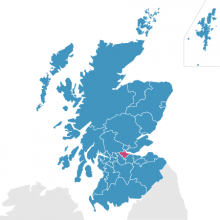Introduction
Every year the number of children coming into care increases as does the need for more foster carers. With foster care catering for over 70% of children in care, foster carers are a key resource for the care system. A systematic review on foster carers revealed that though they are an integral part of the care system, research in foster rarely focuses on the carers. In addition to this, little research has gone into understanding how to recruit foster carers.
This led to the development of an innovative exploratory research design that combined three qualitative methods to explore foster carer recruitment: an online survey, case studies on two organisations involving interviews with foster carers and recruiters, and content analysis of Facebook ads.
Findings
The findings can be split into two key areas: the landscape and the process of fostering.
Foster carer recruitment is influenced by micro and macro factors within the fostering ecosystem. This is best represented with an ecological model centred around the individual who is a potential foster carer. Their personal characteristics, skills, and values influence their decision to foster. Other influences on a person’s decision to foster include their social circles, family, community, life circumstances, and the public beliefs their society holds about fostering. Social marketing indicates that successful recruitment campaigns target both micro and macro levels, from the individual level to the larger societal level. If done well, recruitment campaigns can not only recruit more carers, but they can raise awareness on fostering, shaping how the public views fostering and even reduce stigma around children in care.
The process of recruitment can be broken down into three key phases: introduction, exploration, and testing & assessment. At each of these phases, the fostering engages in unique activities aimed at ensuring they attract, identify, train, and approve the right carers who will meet the needs of the agency.
The introductory phase of recruitment involves activities aimed at attracting people with high fostering potential. This can be done through traditional marketing methods or community-based methods. Although time consuming, community-based methods have the potential to attract higher quality inquiries. Traditional advertising can also be effective if the adverts are framed and designed to attract the right carers.
The second phase of recruitment, exploration, is a key part of the journey as it helps the potential foster carer explore the decision to foster. This can be facilitated through classes, conversations, or a variety of web resources that are aimed of helping the individual gain a fuller understanding of the fostering task.
The final phase is the training and assessment phase. This phase lays a foundation for the relationship between the agency and the potential carer. Training should be thorough enough to impart foundational skills for initial fostering placements. A relational and supportive approach to assessment can help foster carers through this stressful aspect of recruitment which can often be a deterrence to application. Bias training can be useful to help recruiters avoid unconscious bias when assessing carers from diverse backgrounds.
Completed: January 2022.
About the author
Dorothy completed her PhD studies at the University of Edinburgh in January 2022. The research, which focused on the recruitment of foster carers, was inspired by the two years she spent running a fostering agency in Kenya. She is passionate about research that is practitioner oriented, and about helping make knowledge accessible to practitioners. She is interested in qualitative research focusing on interventions for children and families.
Copyright © 2022 Dorothy Neriah. All rights reserved.
Contact: dorothy.neriah@ed.ac.uk




